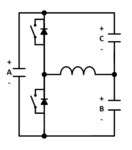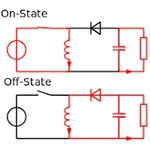pragash
Advanced Member level 2

which one is more power efficient? Buck converter or buck-boost converter?
some of you may say its depends on your application. if lets say i can use either one. which one will be more power efficient and why?
some of you may say its depends on your application. if lets say i can use either one. which one will be more power efficient and why?





